29th January, 2024 – The Venice Carnival is early this year. Festivities started officially yesterday with the Regata of Pantegana. This is a huge procession down the Grand Canal of traditional Venetian boats, accompanied by a giant papier mache rat! The so called ‘pantegana’ explodes next to the Rialto Bridge unleashing a cloud of balloons, confetti and plumes of coloured smoke into the air…. The ‘pantegana’ event marks the start of two weeks of celebrations leading up to Shrove Tuesday and the start of Lent.
The word Carnival or Carnevale – comes from the words ‘carne’ for meat and ‘vale’ farewell referring to the period of fasting and abstinence, in the Roman Catholic church, during the six weeks leading up to Easter. Carnival also marks the beginning of the party season in Venice…..
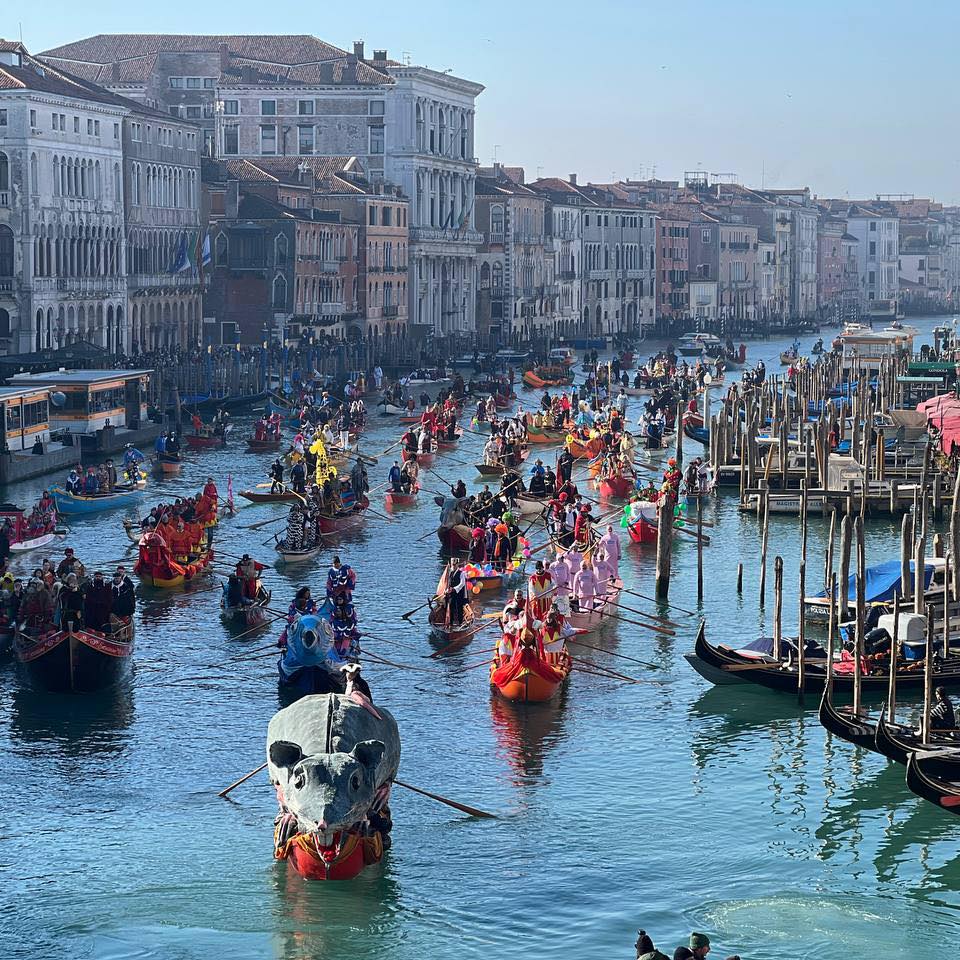
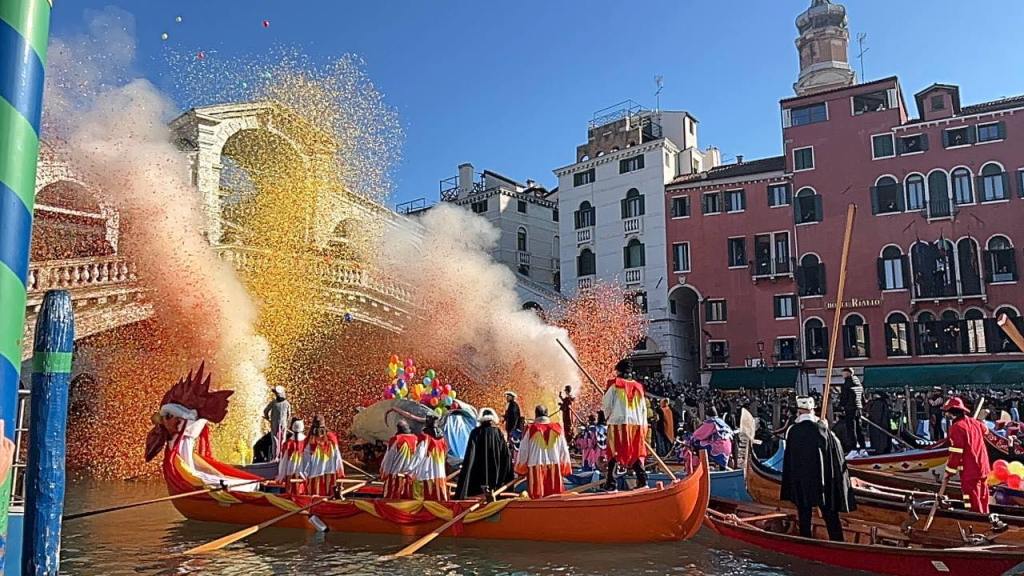
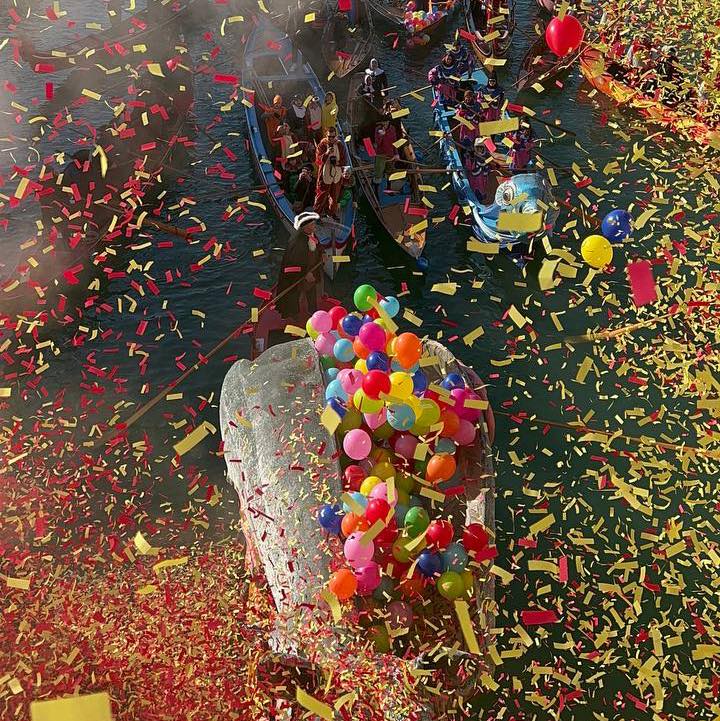
2024 Carnevale – photos from The Mayor of Venice, Luigi Brugnaro
This article was originally written in early 2020, it has been updated with new photographs from the more recent Carnivals of 2022 and 2023. Visitors are back in Venice and the costumes are stunning. Many of the Carnival goers are French, they come to Venice every year to celebrate the ten days leading up to Shrove Tuesday and Ash Wednesday and the start of Lent.

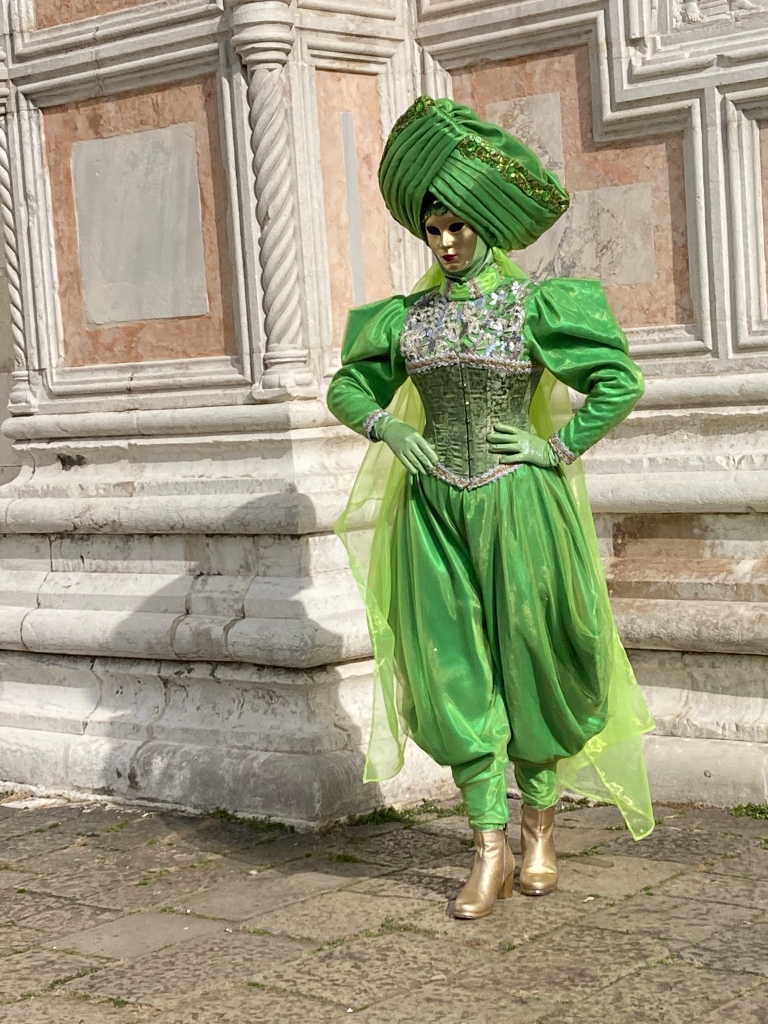
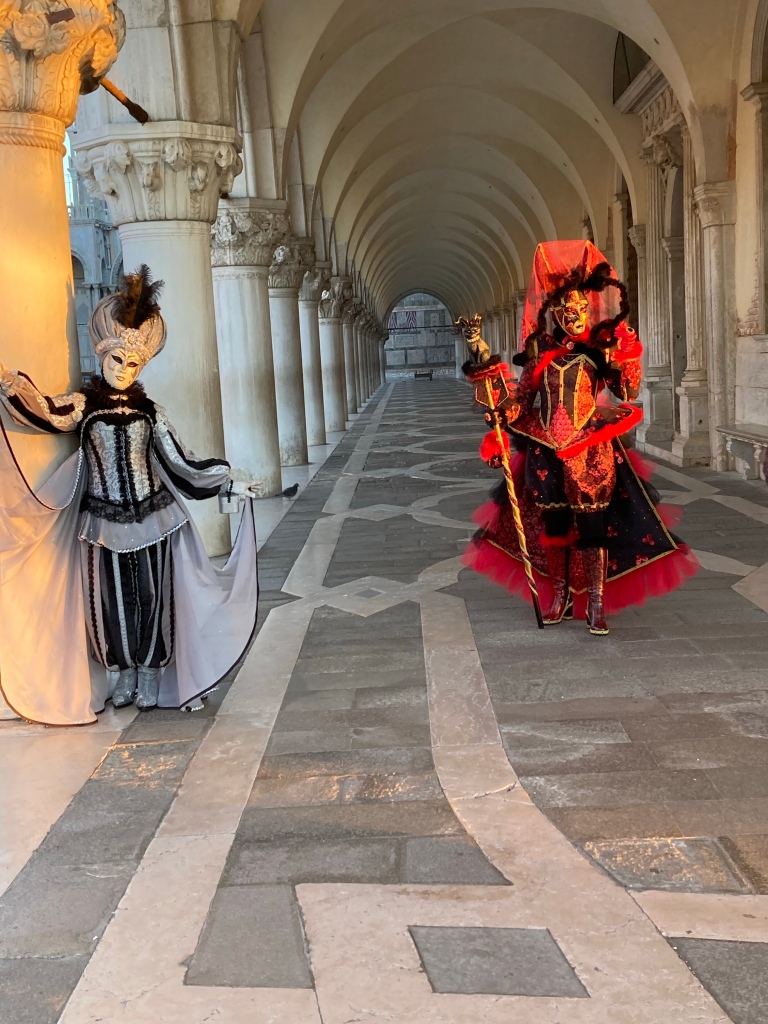
CARNEVALE – It’s Carnevale in Venice and the streets are filled with crazy costumes and parading characters. Carnevale literally means ‘carne’ meat and ‘vale’ farewell ‘goodbye to meat’ in other words. It is a reference to the fasting period that takes place in the 40 days leading up to Easter in the Christian calendar. Traditionally it is a time for parties and festivities in preparation for the serious days of penitence that lie ahead in the season of Lent. To say that the city of Venice is illuminated by fabulous costumes, elaborate gowns and tailoring of the finest sartorial quality would be an understatement. I was seriously impressed by the skill and creativity around every corner.








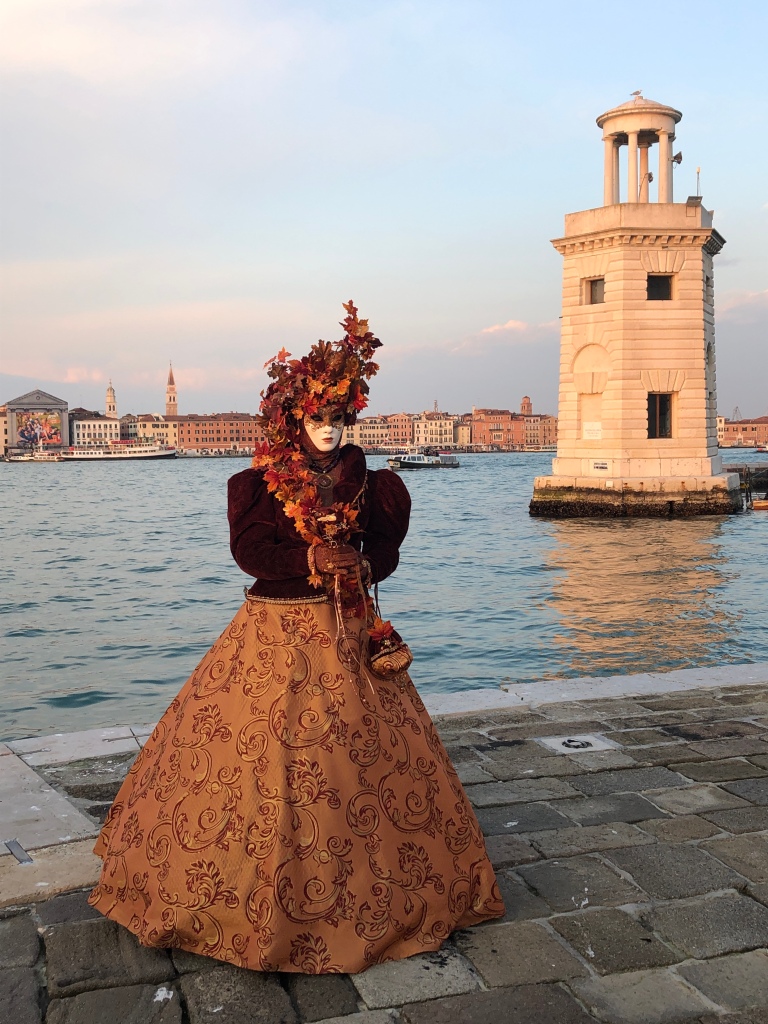




VENICE – The city of Venice was an international trading nation for hundreds and hundreds of years. Venice traded with Greece, Turkey, Egypt, North Africa and the East. The population of the city was cosmopolitan and ethnically diverse. Ships were crowded in the lagoon, loading and unloading cargoes every day of the week. Silks and spices, timber and marble, fine tapestries and jewels, silver and gold. The city was a magnet for ship-owners and merchants. Money flowed into the city and the ‘Merchants of Venice’ were quick to benefit from this avalanche of trade. The wealthy families built ornate palaces along the length of the Grand Canal. Their wives dressed in the finest velvet, satin, lace and silk. They draped themselves in furs, beautiful jewellery and the most elaborate millinery. Life was noisy, chaotic and vibrant. Word spread about the riches of Venice and the fabulous palaces to be found there.
For many Venice was a mythical city of great beauty – where canals and waterways replaced roads, white marble sparkled in the sunshine and some palaces even had their own private collection of exotic animals. Vivaldi the composer was Musical Director at La Pieta Church, Goldsmiths flanked the Rialto Bridge and the artist Pietro Longhi painted a Rhinoceros on display in Venice in the 1740s to an amazed crowd. Venice was a beacon of commerce and modernity. The city’s markets bustled with trade, buying and selling from dawn until dusk. Such a flow of money attracted all types. By the mid-18th century the aristocracy of Europe were arriving in droves to witness for themselves this extraordinary city, marooned romantically between land and sea. The charlatans and socialites arrived too, eager to share in this exciting and dynamic city. Venice – Casanova, Casinos & Canaletto explains a little more about the riches of Venice and her enduring appeal to visitors.
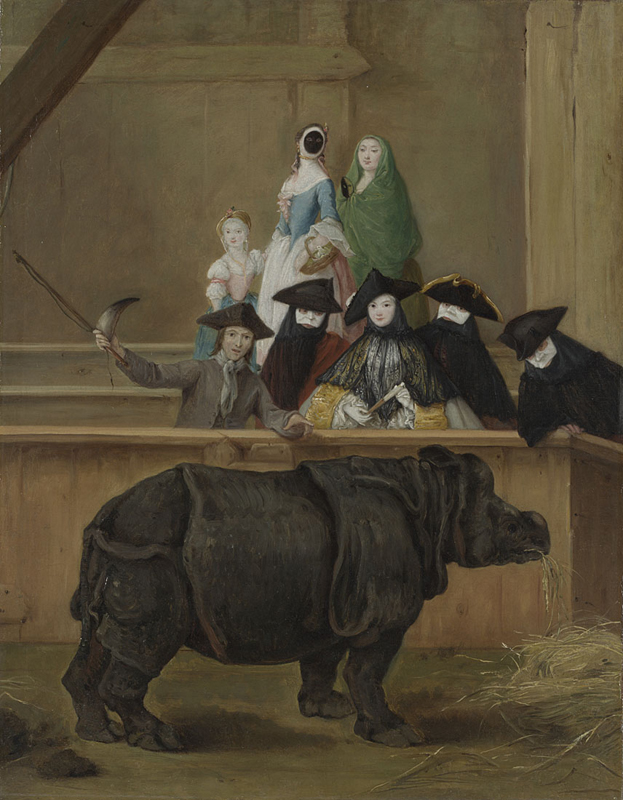
This city welcoming people from all corners of the Mediterranean was vibrant, noisy, full of exotic costumes and customs. Turks arrived in their turbans and flowing robes. The Greeks were present in their baggy trousers and red caps. The European aristocrats arrived in the fashions of the day, ladies in elaborate, towering wigs and gentlemen in velvet breeches and white-powdered faces. Add to this heady mix a sprinkling of nuns and monks, priests and bishops, sailors and soldiers. The result was a cocktail of colours and styles, quirky uniforms and elegant gowns. By the 1750s visitors from abroad had already replaced trade as Venice’s main source of revenue. The wealthy Venetians were already looking for ways to supplement their income. After all a vast fifty room palace on the Grand Canal cost money to heat and maintain. The arrival of the ‘milordi‘ from England, Scotland, France and Germany helped enormously. The Venetians quickly realised that an elaborate party, fine dinners, entertainment and even a spot of gambling could attract foreign guests – often for weeks or months on end.
CARNEVALE The celebration of Carnevale as a huge party really got going in the 18th century. This was the Venice of Casanova. A city where parties, concerts and an anything-goes attitude attracted visitors from all over Europe. Carnevale costumes were usually based on the traditional ‘characters’ of the Italian theatre. These ‘characters’ were deliberate ‘stereotypes’, very easy for people to recognise and very popular in the plays of Carlo Goldoni, Venice’s most famous playwright of the day. For example in Venice there were three or four main characters. ‘Pantalone’ was a greedy merchant, always trying to make money and seduce the beautiful young girls in his household. Then there was ‘Columbina‘ the beautiful servant girl who was in love with ‘Arlecchino‘ a male servant, originally from Bergamo, so techincally not a Venetian. Lastly there was ‘Rosaura‘ the elegant lady. Most of Goldoni’s plays featured these different characters and their interactions and misunderstandings. The French playwright Moliere and Shakespeare, before him in England, also played with and developed these stock characters in their highly popular plays.
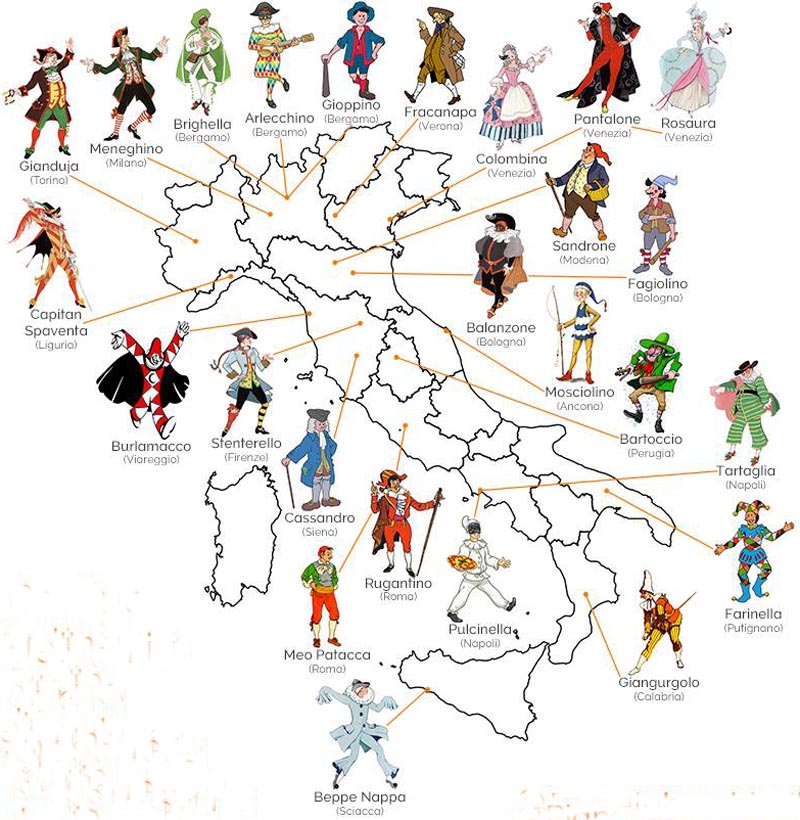
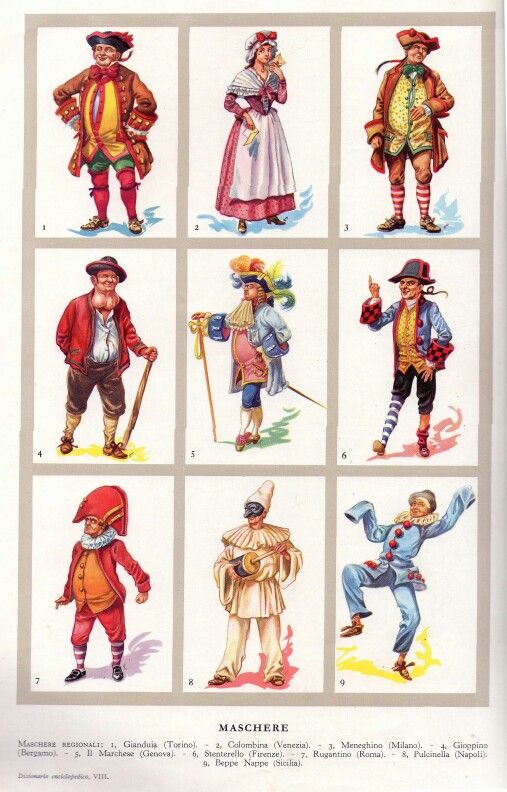
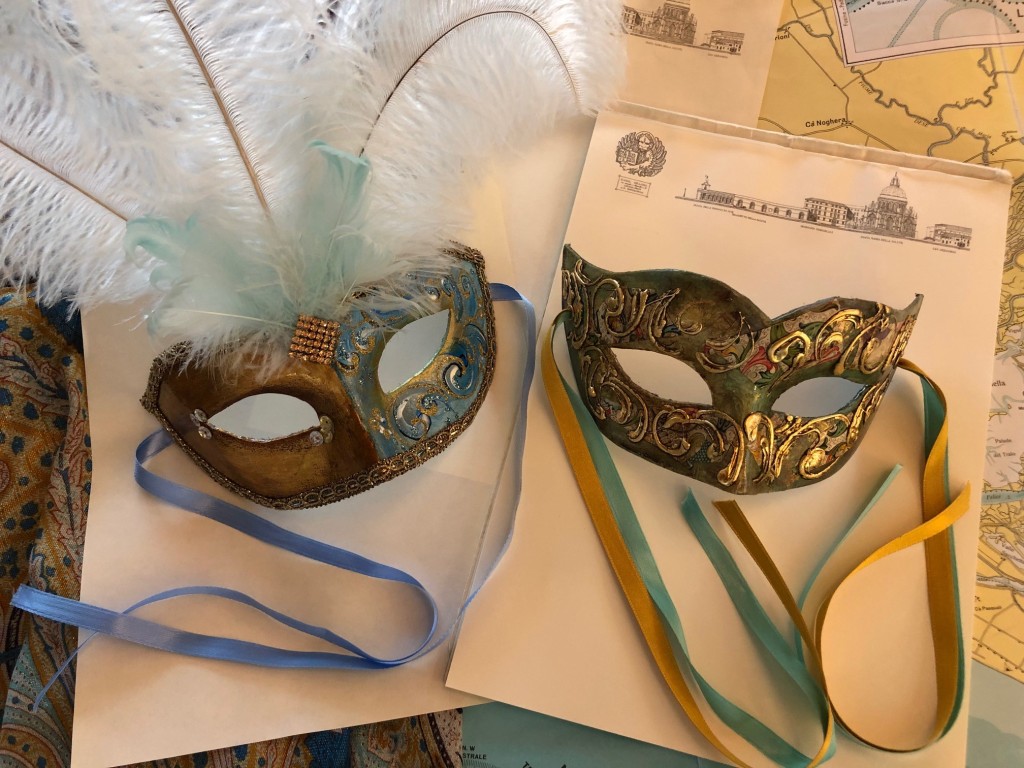

PARTY TIME – The annual Carnevale Party in Venice has always included the wearing of masks. This allowed everyone to mix together with their identities concealed. For the period of Carnevale you could be whatever you wanted to be, the masks offered privacy and discretion. A maid or a nun could be, whilst wearing her mask, completely anonymous. She could be an aristocratic lady or a famous courtesan. Similarly men could dress up as musicians, servants or even plague doctors, whilst wearing a mask their identity was hidden. How delicious. Masks were popular and came in all shapes and sizes. In Pietro Longhi’s painting of The Rhinoceros (above) the people admiring the animal are wearing masks, covering their faces and concealing their identity. In the 18th century masks were often completely plain and monochrome, either white or black. Decorated masks became popular with changing fashions as time went on – especially the ‘Columbina‘ mask, ideal for a lady, which covered the eyes and was often decorated with sequins, coloured ribbons and feathers.
Some of the male masks featured a long protruding beak which dated from the practical garb of the plague doctors in the 1650s. They would wear an elaborate face mask with a long beak or nose whilst visiting houses and patients suffering from the plague. The large nose of the mask was filled with sweet smelling herbs and flowers in an effort to keep the stench of death and decay at bay. It was also hoped that the mask and beak would prevent the doctor from catching the disease. In the 18th century young women who had been forced to join convents and dedicate their lives to God could emerge from their seclusion wearing a fine gown and a mask. They could stroll in Piazza San Marco or attend glamorous parties. Their masks guaranteed them privacy and anonymity. It’s easy to imagine Casanova, the 18th century playboy, charming the ladies and beguiling party-goers with his tall tales and sparkling wit.




BANNED – The celebration of Carnival was banned in 1797 when the Austrians took control of Venice, bringing almost a thousand years of independence to an end. The mask wearing and raucous parties were seen as a threat to law and order by the Austrian Republic, convinced that the Venetians would use the event to scheme and plot against them. They were almost certainly right. A sad piece of Venice’s history. It wasn’t until 1979, nearly two centuries later, that the City of Venice realised that they had a unique opportunity for a low-season event which could stimulate tourism in the middle of winter. The Carnevale of Venezia was reborn with a new generation of followers and fans. Anna Marconi, a fantastic costume maker and designer who attends the Venice Carnevale every year, explained to me that the French have always been tremendous supporters of the Carnival. From the first season of the newly relaunched Carnevale, visitors from all over Europe arrived in the city. Often the most elaborate costumes were created and paraded by French guests.
ANNA MARCONI – Anna Marconi and her brother Lorenzo together make up the Fratelli Marconi. They are talented artists, creators and costume designers. They have a workshop and design studio in Senigallia, a charming seaside town on Italy’s Adriatic Coast, just north of the port city of Ancona. These days they are part of the fabric of Carnevale di Venezia. Every year they are present at the event and they have won numerous awards for their designs. In 2020 Anna Marconi was actually part of the Judging Panel, a prestigious appointment indeed. In recent years they have been prize winners for the ‘piu bella maschera‘ costume creation as follows:
- 2013 : Alla Ricerca del Tempo Perduto by Anna Marconi
- 2015: Monsieur Sofa & Mlle Coco, Lorenzo Marconi – Premiazione
- 2016 : I bagnanti di Senigallia by Anna and Lorenzo Marconi
SENIGALLIA – My friend Lara Massi, who works in the Senigallia Tourist Office kindly introduced me to Anna and Lorenzo Marconi. I was able to meet and watch this incredible sister and brother in action. They were amazing. Professional, interesting and kind. It was a pleasure to witness them in one of their many photo sessions during their days in Venice. This year their theme was ‘Enchanted Theatre’. Lorenzo and Anna make every element of their costumes. The miniature theatre held by Lorenzo was made in their workshop in Senigallia. I quickly realised that the costumes, richly detailed and beautifully made as they are, are not the whole story. It’s also about getting into character and in Madonna’s famous words from the song ‘Striking a Pose’ and boy oh boy do these guys know how to strike a pose. It was such a joy to watch professionals in action.


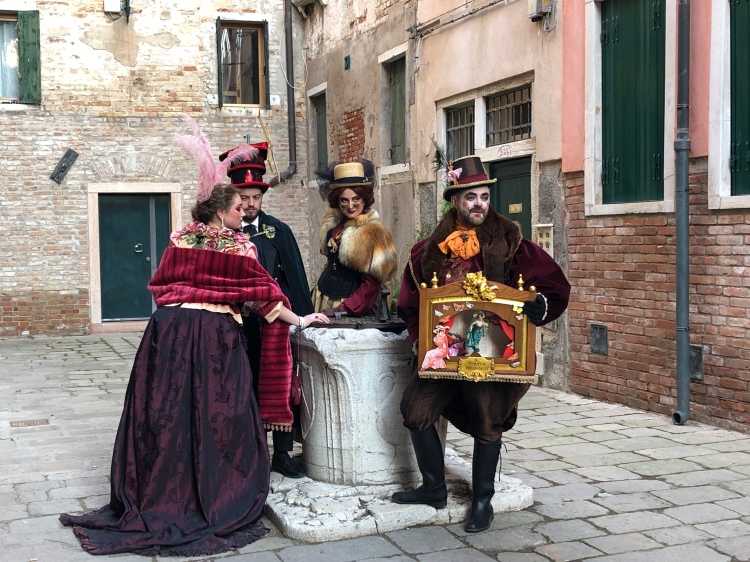


For Anna and Lorenzo the costume creation is a year round labour of love. It is a way to channel their artistic talents and passions into unique and original designs. Each year offers a challenge for a new design and new inspiration. The brother and sister work every day in their studio in Senigallia where they have dedicated their lives to tailoring, art and design. It is called Marconilandia and I’d strongly recommend a visit either on-line or in person next time you visit Senigallia.

Venice Carnevale is taking place now up to and including Shrove Tuesday – which this year is 13th February, 2024. It’s an opportunity to witness amazing costumes, creative, clever and witty designs and a chance to experience real-life street theatre at its best. As the wearing of masks is compulsory for Carnevale participants, it is the ideal event for the new world order, where rampaging viruses, for which we have no cure run wild and free. Plague and disease is nothing new to the City of Venice, the Venetians invented the term ‘quarantine‘. Rather predictably I’ve written an article about that too!




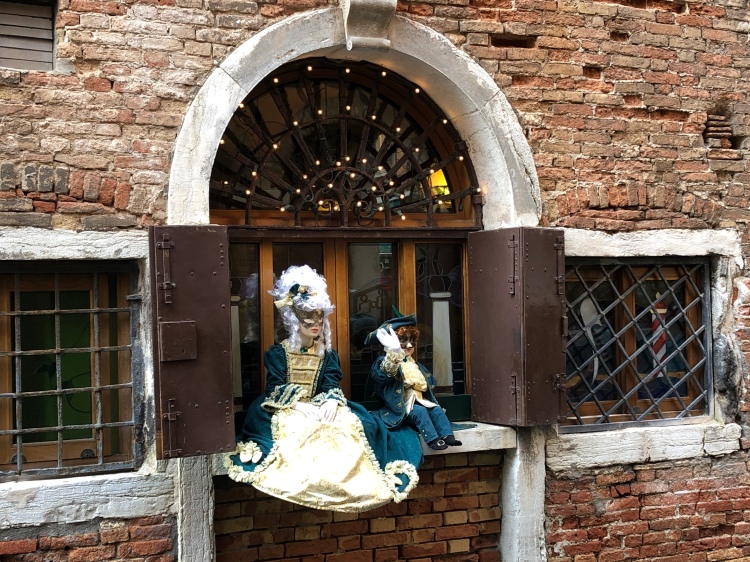
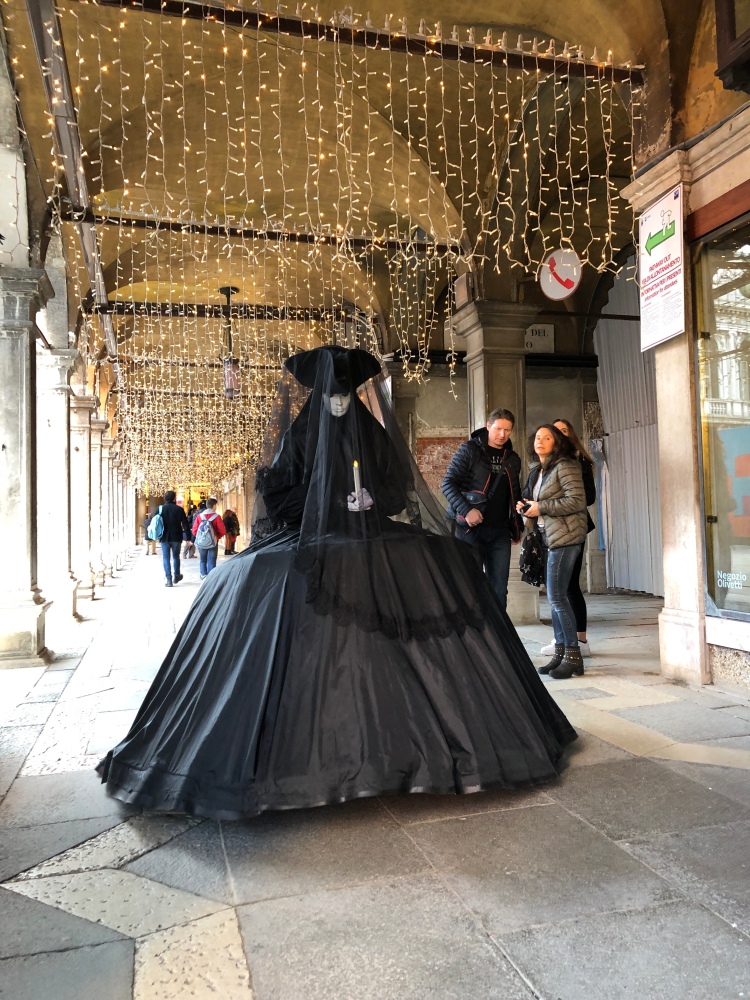
www.greyhoundtrainers.com


Notes:
- My friend Roberta Carrara is a Venetian mask-maker. Her work is sublime. You can read more about Roberta here: The Mask Maker of Venice
- The Fratelli Marconi are Anna and Lorenzo – They are a creative brother and sister phenomenon. Visit their web site for more: https://marconilandia.com/costumi-di-venezia/
- Senigallia is a delightful seaside resort on the Adriatic Coast just north of Ancona. Senigallia is in Le Marche region of Italy – beautiful countryside, rolling hills, fabulous historic villages, great wines, amazing food. Properly, authentically Italian. I recommend a visit. www.feelsenigallia.it/en
- To read more on Le Marche and Senigallia then may I suggest other articles written by www.greyhoundtrainers.com
- To get you started something humorous – Never send Money Home!
- For more on Quarantine in Venice: Venice – Health, Quarantine and Santa Maria
- Official web site Venezia Carnevale: www.carnevale.venezia.it/
- The painting of Clara the rhinoceros is in the National Gallery – London. Artist – Pietro Longhi – full details here: www.nationalgallery.org.uk/paintings/NG1101


- www.greyhoundtrainers.com – tales from Italy, Alps, France and British Isles
- www.grand-tourist.com – tailor-made journeys in Italy
Updated: January, 2024

Photo – Office of the Mayor of Venice (FB 2024)
January, 2024

I would like a poster of carnavale 2022
LikeLike
If you find an image that you like I can send it to you.
LikeLiked by 1 person
Well done, Janet – you’ve done it again! A vivd, gripping fascinating trip back in time and place which has brought Venice to life on the page. What a brilliant account, and what fabulous photographs! Just what we need to take our minds off the current problewms, and transport us into such a wonderful world of colour, intirgue, romance, fashion and excitement! Keep up the marvellous work.
LikeLiked by 1 person
Thank you John – you are definitely my Numero Uno fan xxxx
LikeLike